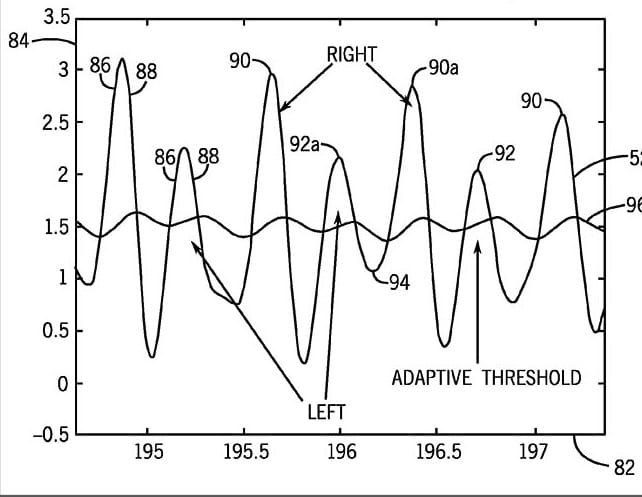AppleInsider reprots of three different patents filed by Apple that aim at improving the accuracy of pedometer implementation using current devices or any device supporting a gyroscope and accelerometer. Apple’s patent suggest it being keen on creating a dedicated health accessory or to implement it in their current mobile devices itself. Accessories like FitBit, Nike Fuel Band, Jawbone Up and Samsung’s recently showcased watch all aim at helping user track their daily calorie burning and help them in gamifying their daily target for burning calories. Currently Apple provides APIs for users to track a users motion so that it can be implemented in their mobile applications (eg: Nike +) but there seems to be no advanced way of having a better accuracy.

A pedometer is a device for detecting motion, especially the number of step taken by a user. But due to limitations in the current algorithm which filter out data recorded with even minor deviations the current devices are not able to track all positive data points. Apple patent talks of specific implementation of a fast Fourier transform (FFT) for frequency analysis that will even consider changes in steps.
A specific example given by Apple: “Due to the higher offset of average acceleration during running measurements, some negative slope 88 to positive slope 86 threshold crossings may not be detected. For example, the negative slope 88 to positive slope 86 transition at point 94 in the graphed modulus 52 does not cross the 1 g threshold between peaks 92a and 90a. As a result, while peaks 92a and 90a may actually correspond to two steps (e.g., a left step and a right step), conventional threshold filtering techniques may detect only one step due to the lack of a negative to positive transition (e.g., point 94) crossing below the fixed 1 g threshold”

Apple might be keen on implementing this in their rumoured iWatch to improve the functionality of their watch and attract users. A watch will most probably be worn by a user for most part of his day and implementing a health based use case will be an attractive feature.
Source: AppleInsider
